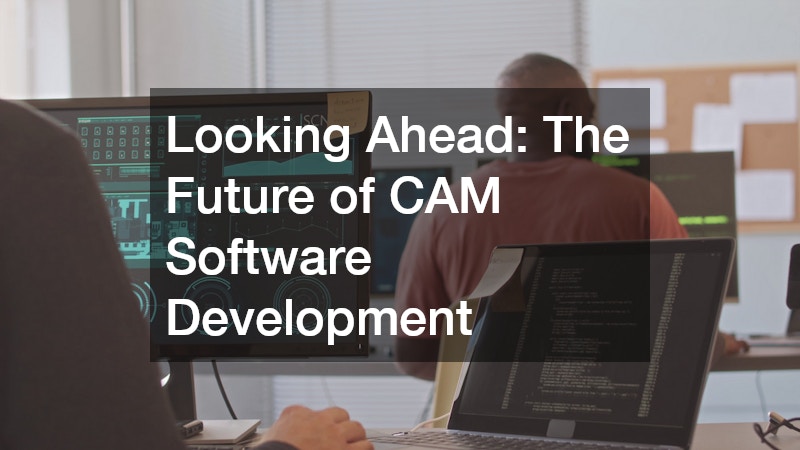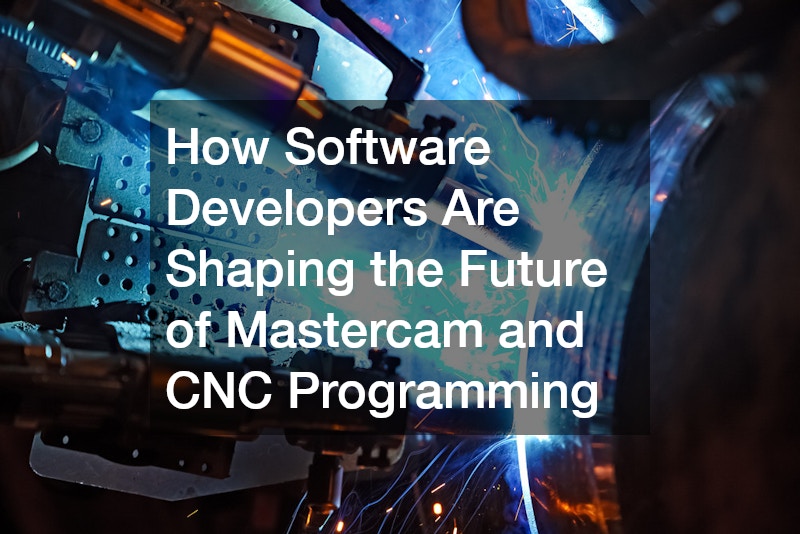
In the world of advanced manufacturing, efficiency, precision, and automation are essential for staying competitive. One of the most powerful tools in modern machining is Mastercam, a leading computer-aided manufacturing (CAM) software used to control CNC (computer numerical control) machines. While machinists and engineers are often the face of manufacturing, behind the scenes, software developers are playing an increasingly important role in enhancing what Mastercam can do.
These developers are not only refining the software’s core functionality but also extending its capabilities through custom scripts, plug-ins, and automation workflows. In many ways, the collaboration between CAM users and software developers is shaping the future of smart manufacturing.
The Role of Mastercam in Modern Manufacturing
Mastercam is a CAM software widely adopted in industries such as aerospace, automotive, medical device manufacturing, and custom fabrication. It allows users to design toolpaths and automate CNC machining processes with incredible precision.
Whether it’s 2D milling or complex 5-axis operations, Mastercam provides the interface and intelligence needed to bring CAD designs to life on the shop floor.
Traditionally, operators and CNC programmers worked directly within Mastercam’s built-in features to generate toolpaths and outputs. However, as production demands grow more complex, the need for customisation and process automation is increasing. This is where the software developer becomes a critical asset.
Where Software Developers Fit In
A software developer working in the CAM ecosystem has a unique hybrid role. They understand both the principles of programming and the specific challenges faced by manufacturers. Many developers working with Mastercam use scripting languages like C#, VB.NET, or even Python to extend its functionality.
For instance, developers can create custom macros that automate repetitive tasks such as setting up standard tool libraries, defining material properties, or applying consistent machining strategies across different parts. These automations not only reduce the potential for human error but also save significant time.
Moreover, developers are often responsible for integrating Mastercam with other business systems. A manufacturer might want Mastercam to automatically pull data from their enterprise resource planning (ERP) software or product lifecycle management (PLM) system. A software developer can write the code that makes this integration seamless.
Custom Post Processors and Simulation Enhancements
One of the most powerful ways software developers contribute to the Mastercam ecosystem is through the development of custom post processors. A post-processor is a script that translates the internal toolpath data from Mastercam into the G-code understood by CNC machines.
Since each machine and controller can interpret G-code slightly differently, having a tailored post-processor ensures the output is optimized for a specific environment. Developers who understand both the Mastercam architecture and the CNC hardware can write these post processors to meet exact needs, reducing setup time and increasing confidence in the final program.
In addition to post processors, developers may also enhance simulation features, integrate third-party verification tools, or even create visual dashboards to track machine utilisation and job status.
Automating the CAM Workflow
In high-volume or high-mix production environments, efficiency is everything. Software developers play a vital role in building automation pipelines that connect Mastercam with upstream and downstream processes.
For example, a developer might write a script that automatically imports CAD files from a shared folder, applies a series of pre-set toolpaths, simulates the operations, and exports the G-code — all with minimal human intervention. This type of automation allows for rapid scaling and faster turnaround times.
Developers can also integrate Mastercam with quality assurance systems, enabling automatic comparison between the final CNC output and the original CAD file. This reduces the time spent on manual inspection and enhances quality control across the board.
Enhancing User Experience and Accessibility
Beyond automation and integration, software developers are contributing to a better user experience within Mastercam. From developing intuitive user interfaces for custom functions to building browser-based dashboards that display job status, the developer’s impact is felt in nearly every layer of interaction.
Some developers even create training tools and custom wizards that guide new users through the setup of common machining jobs. These resources are especially valuable for smaller shops that may not have dedicated CAM specialists.
Collaboration Between CAM Professionals and Developers
The synergy between Mastercam users and software developers is most effective when both parties understand the goals and constraints of the other. A skilled software developer doesn’t need to be a machinist, but they benefit greatly from a working knowledge of CNC principles and machining best practices.
Likewise, machinists and engineers can gain from learning the basics of scripting or understanding what’s possible through development. This mutual understanding leads to better communication, faster problem-solving, and more impactful innovations.
Looking Ahead: The Future of CAM Software Development
As manufacturing continues to evolve toward digital-first and data-driven practices, the importance of software development in the CAM space will only grow. Emerging technologies like machine learning, augmented reality, and cloud-based toolpath management all present new opportunities for developers to expand the role of software in machining.
Mastercam is already a powerful tool, but its true potential is unlocked when paired with a software developer who can tailor it to a specific environment, build automations, and integrate it into a broader digital workflow. In essence, developers are turning Mastercam from a standalone application into a dynamic, connected part of the smart factory.





